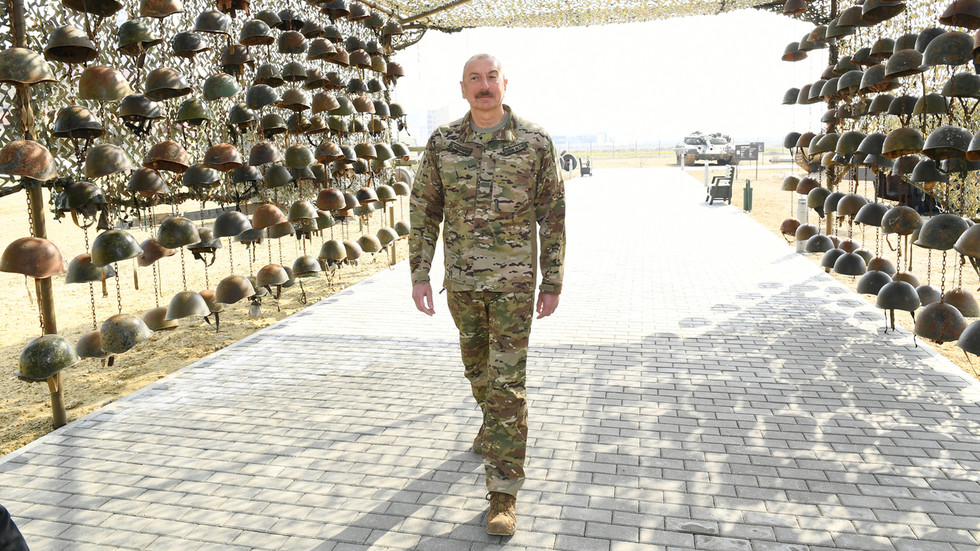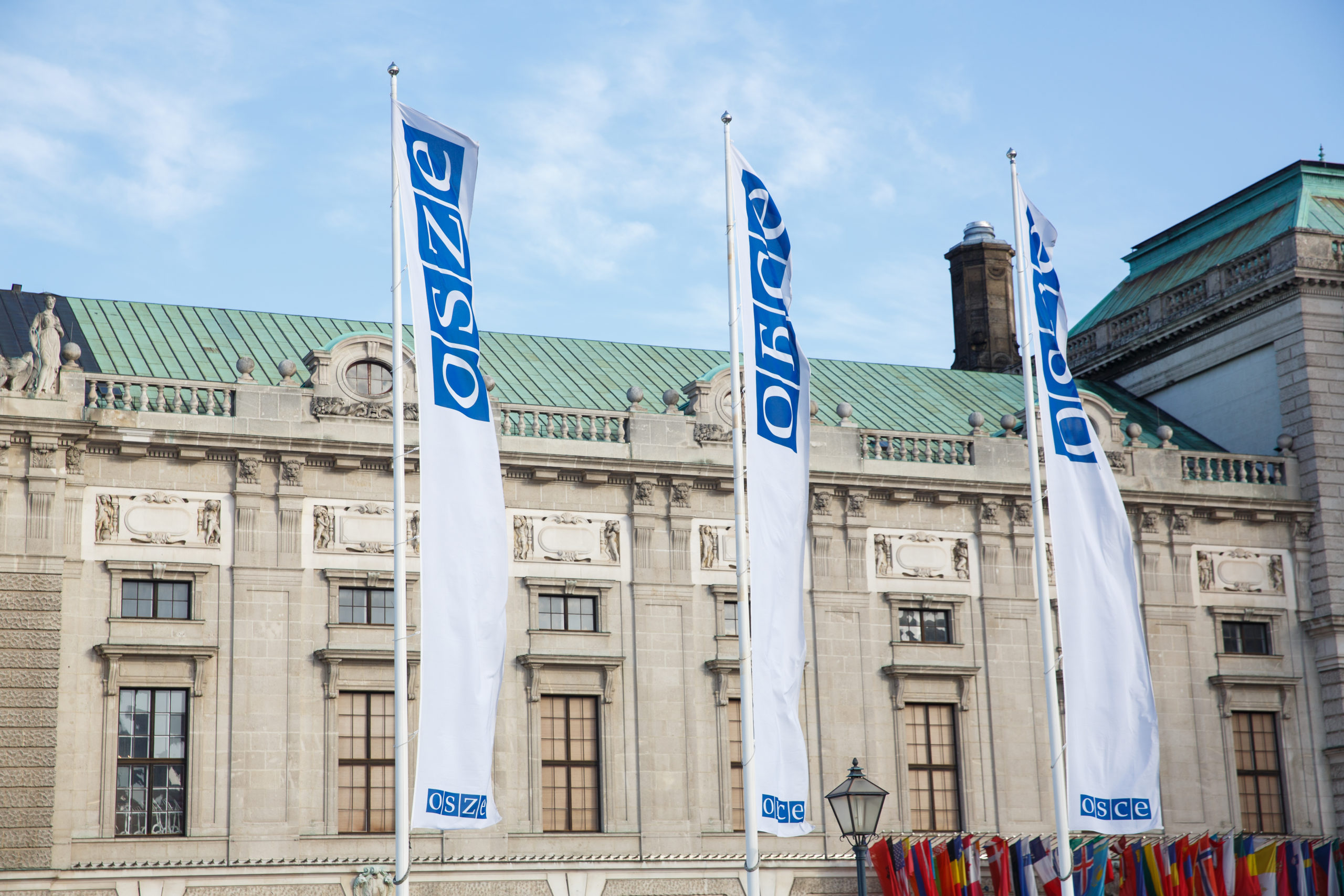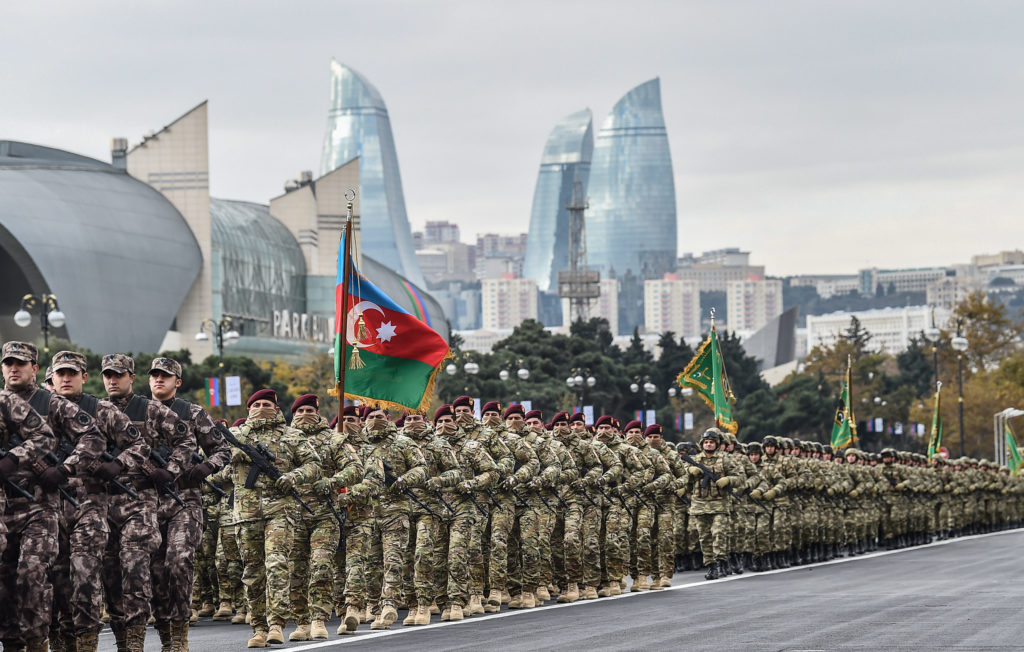BAKU
AZERBAIJAN’s decisive battlefield victory over Armenia late last year – during a 44-day blitzkrieg – brought a sudden end to a 30-year war that left as many as 40,000 dead and up to a million displaced.
Yet the end of the war exposed something else.
For 28 years, there had in fact been a high-profile “mediation” effort between Baku and Yerevan.
The “peace process” was run by the Organisation for Security and Cooperation in Europe (OSCE). It was basically shuttle diplomacy by diplomats from the U.S., France, and Russia. It was and is called the “Minsk Group”, because it was agreed on in the Belarusian capital in 1992.
Though the format produced sporadic “progress” over the years in the form of documents and – many years ago – a set of “basic principles” for resolving the conflict, it turned out to be absolutely meaningless in late 2020, the end game of the war.
As Azerbaijani forces, backed by Turkish military know-how, crushed obsolete, trench-style Armenian positions by zapping them with high-tech weapons, such as “suicide drones”, the OSCE stood by helplessly.
AZERBAIJAN, OTHERS DISMISSED OSCE AS USELESS
To Azerbaijan, this was exactly the way things were intended.
President Ilham Aliyev this week used only very thinly veiled language in saying “mediators” – which could only mean the OSCE – were not neutral but rather too often bureaucrats only interested in preserving the “status quo”.
The “status quo” – until Azerbaijani forces drove out Armenian occupying troops – contradicted several UN Security Council resolutions from the early 1990s demanding they leave.

Aliyev, addressing a group of military personnel at the opening ceremony of a new Baku “Victory Park”, expressed disdain for the ultimately failed mediating format.
“For many years, international mediators, negotiating, deceived us. They sought not to resolve the conflict, but to freeze it. International structures wanted to leave the occupied territories to the Armenians,” he said.
Aliyev was referring to seven districts of Azerbaijan which had been held by Armenian forces since the early 1990s. None had any significant ethnic Armenian population before the war, which began to brew in 1988 as the USSR weakened, and picked up speed in the early 1990s. It was those districts which were the subject of the four UN Security Council resolutions.
At least 600,000 ethnic Azeris were ethnically cleansed from the areas which only late last year returned to Baku’s control, though during the nearly three-decade occupation the districts were systematically looted of anything of value, from wiring to bricks. Almost no Armenians relocated to the devastated regions, save mostly those who had some connection to serving as support for Armenian occupying troops.
Aliyev also revealed another fact for the first time – officially, at least. He said his government knew the OSCE led format was hopeless, but given no alternatives, quietly played along with the protocol bit.
And at the same time, Azerbaijan steadily built its armed forces using cash earned from newfound Caspian Sea oil revenues.
“Therefore, preparation was carried out simultaneously with the negotiations and we did not hide it,” he said. “In order not to depend on one side, weapons were purchased in different places”, in an apparent reference to Baku’s “multi-vector” foreign policy, in which it is not allied with any bloc but maintains good ties with as many countries as possible.
Weapons were also procured from a wide variety of sources, from Russian companies to Israeli to Turkish and others.
OSCE – COMPETING INTERESTS

This week’s missive was hardly the first time Aliyev had blasted the mediating format as biased and ineffective. He had done so repeatedly throughout the years. Baku held out special angst for France, one of the three co-chair countries.
It argued Paris was too much under the influence of diaspora Armenians. French diplomats in the past acknowledged in private that the Armenian diaspora in the country was a voting bloc it could not afford to ignore.
Baku argued – and still does – that France should be replaced by the E.U. or another entity.
Even so, the makeup of the mediating format was bound to create contradictions. Russia and the United States, after all, two of the three other co-chair countries, have fraught relations. Moscow has generally looked at most post-Soviet countries as its backyard and exclusive area of interest.
Thus, as partner co-chairs, there were always bound to be misunderstandings.
Then there is the structure of the OSCE itself. It was founded in 1973 as the Conference for Security and Co-operation in Europe (CSCE) as a result of the Helsinki accords meant to monitor humanitarian and economic issues, essentially in the Soviet-dominated eastern Europe.
Yet now with now 57 member states, the OSCE, which was renamed in the 1990s, is run on the rule of consensus, meaning a single country can veto the budget of the entire organisation or the functioning of local country offices.
This means agreement on just about anything can be difficult.
“There are ‘inclusive’ organisations – like the UN and OSCE, and there are ‘exclusive” ones, like the EU or NATO,” – said one western diplomat. “Inclusive ones have a fundamental problem.”
In the case of Azerbaijan and Armenia, the consensus issue was a clear impediment. When OSCE Minsk Group co-chairs would visit the region, their arrivals were usually heavily covered in the local media outlets in the countries.
However, this often overstated the importance or power of the co-chairs.
Mediators had no official “negotiating” role – merely an unclear mediating one.
In addition, the OSCE maintained a tiny bunch of “military observers” – less than a dozen – for front lines between the sides that ran for hundreds of kilometres. Given alone their miniscule presence, they also had almost no official mandate. Visits to front line areas had to be agreed in advance with the sides, and the “observers” had no power to investigate cease-fire violations.
Azerbaijan’s Aliyev finally gave up on the “Minsk Group” format for resolving the conflict in mid-2020 after another flare-up in fighting with Armenia. He at the same time fired his long-time foreign minister, Elmar Mammadyarov. President Aliyev said the reason was the minister’s continuing priority of engaging in “meaningless talks” with Armenia which were going nowhere.
FAILURE BRINGS ABOUT QUESTIONS AS TO RELEVANCE
The intense criticism of the OSCE’s failed efforts to make a breakthrough in resolving the conflict based on the “Basic Principles” that the sides signed onto 15 years ago – including an Armenian withdrawal from occupied areas – has raised the question of whether the Vienna-based organisation, faced with so many competing interests, and others say – an entrenched, stale bureaucratic culture – can effectively serve in such complex conflict environments as the one between Armenia and Azerbaijan.
Azerbaijan’s Aliyev, for his part, said later this week that the OSCE Minsk Group’s continuing presence was of an unclear dimension.
“What the Minsk Group will be doing is still unknown to us. We look forward to some creative ideas from them, Aliyev said during a press statement with Belarus President Alexander Lukashenko, who was visiting the capital Baku.
This is only a tiny departure from Aliyev’s words to an OSCE Minsk Group delegation which visited immediately after the cessation of hostilities and the deployment of Russian peacekeepers. He told the delegation then – late last year- that basically he was meeting them only out of respect, not because they achieved any results.
Azerbaijan says it was forced to act militarily after years of frivolous negotiations and bad faith from Armenian leaders, who Aliyev claims repeatedly pledged to leave the now de-occupied territories, only later to claim domestic pressures made territorial concessions political suicide.
An OSCE Minsk Group delegation, including the Russian, U.S. and French co-chairs visited the region this week.
They issued a statement in which they declared they still had a role to play, including in prisoner of war exchanges, the unblocking of transport routes between the countries, and the final status of the remaining part of Nagorno-Karabakh still under separatist control.
But political analyst Avaz Hasanov said the OSCE was now clearly going to a changed role, and what exactly that would entail was still not clear.

